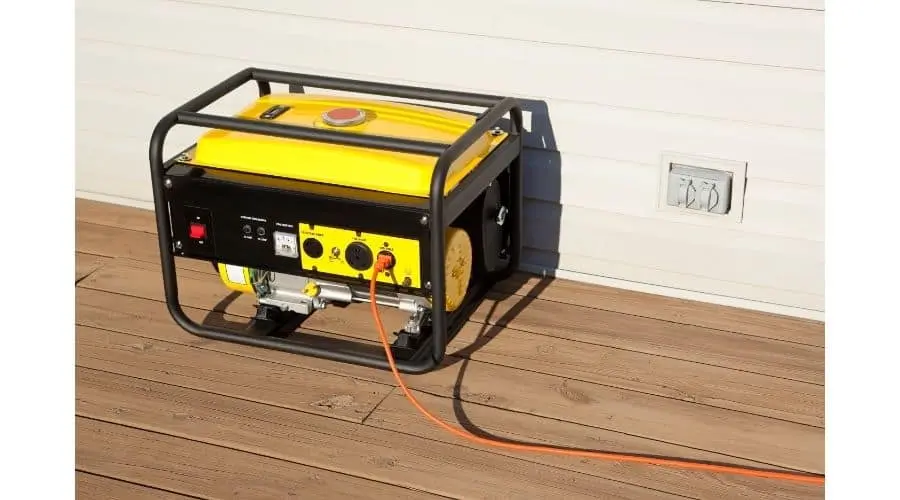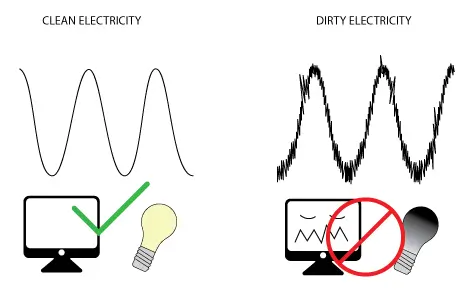You can run a welder off a generator, but they have “dirty” power, which can damage your welder. Select a generator with a THD rate of 6% or less to protect your welding machine.
The generator must have sufficient power output (measured in watts) to match the welder’s input requirements. Choose an appropriately-sized generator with a steady output and consider possible voltage fluctuations, which can affect welding performance and consistency.
When you weld, you can’t always rely on having access to your workshop and a great power supply. Sometimes, you must go weld outside, whether an amateur or a professional. Or your workshop may have a strange setup and make regular wall outlets inaccessible. Regardless, some welders prefer to run their welding machines off of generators.
You need to know here before plugging your welder into a generator.

Table of Contents
Can You Run a Welder Off a Generator?
Yes, you can run a welder off a generator, but it must have sufficient power output (measured in watts) to match the welder’s input requirements. Choose an appropriately-sized generator with a steady output and consider possible voltage fluctuations, which can affect welding performance and consistency.
Welders need power to operate. Most arc welding machines use an electrical power source to create the arc. Ideally, you would run a welder by plugging it into a wall socket, which is the most reliable way to deliver power.
However, there are situations when a wall source of power is unavailable.
- Maybe the power is out, and you urgently need to weld something.
- Maybe you are working on a welding project outdoors, far away from a power source.
- Maybe the wall socket in your workshop is just too far away.
In those situations, you can use a generator.
Which Welders Can Run Off a Generator?
You do need to watch out for a few things before plugging in your generator. Some welders don’t work well with generators and will get damaged.
The best welders for running off a generator are transformer-powered welders. Transformer-powered welders have a built-in transformer that converts the power source into the right current for the welder, usually a low alternating current.
However, many modern manufacturers are switching to inverter welders. Inverter welders use complicated electronics to power the welding machine. Inverter welders are smaller, sleeker, and more efficient because the bulky transformer was removed. Without the transformer, they rely on the input power tailored to the welder’s needs. That means the inverted welder is much more sensitive to fluctuations in power, which are more common with a generator.
You can still use some inverter welders with generators. However, make sure that you are choosing a model designed for use with a generator.
I personally use the DuoMax Generator and am very happy with its performance:
The Disadvantages of Using a Generator as a Power Source
The advantages of using a generator as a power source are immediately visible. Generators are portable and mobile, ensuring that you can work anywhere.
However, they also have a few disadvantages. You should be aware of them before plugging any machinery into the generator.
1. Generators Have Dirty Power
When we use the term dirty power referring to a generator, we’re not talking about the exhaust that a generator produces (although the pollution is another disadvantage we’ll get to later). We’re referring to the quality of the electrical output.
Sensitive electronics prefer to get their power via an electrical source that produces an AC current as close to a perfect sine wave as possible. Power from an electrical main manages to achieve this goal.
However, generators deliver dirty power, or electrical waves that fluctuate. Generator electricity is not as stable as you would get from a wall socket, with periodic surges, peaks, and troughs. Although the average voltage as you run it may be the same, the spikes in power affect the quality of the electricity.
Generator specifications often give a THD or Total Harmonic Distortion, which describes how close the power wave is to a perfect sine wave. Generators with a THD rate of 6% or less produce ‘cleaner’ power and are better suited for welding machines.

2. Generators Could Damage Your Equipment
Because generators deliver this “dirty” power, your welder could experience a sudden surge in electricity when it’s plugged into a generator. Surges damage sensitive electronic parts such as capacitors, which are the parts that replace a transformer in an inverted generator. Once you damage these internal electronics, you have to get a new welder.
3. Generators Are Not Pleasant to Work Near
This might be less important than the prospect of damaging a welder that costs hundreds of dollars, but generators are not always the most pleasant items to work with. They make a lot of noise, smell bad, and generate a lot of pollution that works its way into your lungs. Welding is already a dirty job; you don’t want to add to it with generators if you don’t have to.
What Size Generator Do I Need?
Choosing the right size is important if you need to run your welder with a generator. The answer depends on the max output of your welder. The bigger the output, the bigger the generator you will need to power it.
If your welder only goes up to 130 amps, you only need a generator of about 7 kva. However, if it goes up to 250 amps, you should get a much bigger generator of 15+kva.
These are just guidelines, so look for generator size charts when shopping for one to power your welder.
| Welding Machine Max Output | Minimum Generator Size | Ideal Generator Size |
| < 130 Amps | 6 kva | 7+ kva |
| 130 to 160 Amps | 7 kva | 8+ kva |
| 160 to 200 Amps | 8 kva | 10+ kva |
| 200 to 250 Amps | 13 kva | 15+ kva |
Tips and Mistakes to Avoid
When you’re running your welder off a generator, here are some tips to keep in mind.
- Always ground your generator. Grounding completes the circuit and prevents you from getting shocked.
- Get a quality generator. Make sure it has low Total Harmonic Distortion, lessening the surge risk. Your generator is not the area where you want to save money.
- Regularly maintain your generator. Make sure that parts such as the power extension leads, fuel lines, and cables are in good condition with no bends or tears.
Final Thoughts
When using a welding machine, it’s almost always better to connect it to a main power supply. Sometimes, you have to use a generator.
When connecting a welder to a generator, it’s better to use a bulky transformer than an inverter welder. If you have to use an inverter welder with a generator, make sure the generator has low Total Harmonic Distortion and is the right size to power your machine.
